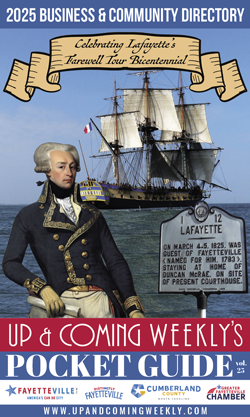1775: The White Christmas no one wanted
- Details
- Wednesday, 31 December 2025
- Written by John Hood

 Two hundred and fifty years ago during the week of Christmas, thousands of Carolinians were trudging through deep snow. They weren’t in search of Christmas trees, or heading over the river and through the woods to their grandmothers’ houses for holiday feasting. These were Patriot militiamen, from both Carolinas, hunting for Tories in modern-day Greenville County, South Carolina.
Two hundred and fifty years ago during the week of Christmas, thousands of Carolinians were trudging through deep snow. They weren’t in search of Christmas trees, or heading over the river and through the woods to their grandmothers’ houses for holiday feasting. These were Patriot militiamen, from both Carolinas, hunting for Tories in modern-day Greenville County, South Carolina.
The Snow Campaign of 1775, as it came to be known, was the second act of a revolutionary drama that began earlier in the year when the royal governors of North and South Carolina were each chased out of their capitals — New Bern and Charleston, respectively — to the safety of British warships anchored off shore.
The governors, in turn, attempted to rouse anti-revolution Carolinians to come to the defense of king and Parliament. There were, indeed, thousands of such Loyalists in the Carolinas, including merchants, lawyers, and other professionals in the towns as well as Scottish Highlanders, former Regulators, and other dissenters in the backcountry.
Some responded by assembling as Loyalist militia companies. Others responded to Patriot calls to do the same.
The first major clash between the two sides occurred in mid-November in the distinctively named South Carolina town of Ninety Six.
While more Loyalists than Patriots died in the battle, it produced mixed results. The Loyalists withdrew across a nearby river, allowing the Patriots to withdraw in good order from Ninety Six. The campaign continued into
December. A key Loyalist objective was to transport guns and ammunition westward into Cherokee territory and convince the Indians to join in attacks on the Patriots. Sixteen years earlier, during the final stage of the French and Indian War, Cherokees infuriated by what they viewed as mistreatment by their longtime British allies had switched sides and attacked all along the Carolina backcountry. It proved to be a costly mistake. Cherokees lost men and land.
When the Revolutionary War broke out in 1775, British agents promised guns and revenge if the Cherokees would join their cause and fight the Patriots. This wasn’t as strange an offer as it sounds today. While British governors had supervised the earlier war against the Cherokees, many of the officers and virtually all the men who’d killed Cherokee warriors and burned Cherokee settlements were Carolinians in militia service. Now these men led or filled the ranks of the Patriot militia.
As it happened, the British strategy did bear fruit — eventually. By the summer of 1776, a significant number of Cherokee chiefs were ready to enter the war on the British side. But 250 years ago, as hundreds
of Loyalists marched through the snow with weapons intended for Cherokee hands, they were set upon by many thousands of Patriots.
The main clash occurred on December 22, 1775 at the Great Cane Break on the Reedy River, near modern-day Simpsonville, South Carolina. The Patriots surprised and thoroughly routed the Loyalists, capturing the supplies meant for the Cherokees. All did not end well for the Patriots, however. Right after the battle came a terrible storm. It reportedly snowed for 30 hours straight. Inadequately clothed and provisioned, many militiamen suffered frostbite and other permanent injuries. Even those who made it home intact recalled the “Snow Campaign” of 1775 with dread and loathing.
Among those homeward-bound militiamen, victorious but chilled to the bone, were my 5th-greatgrandfather John Worke of Rowan County, my 5th-great granduncle Thomas Sumter (who would later win fame as the “Carolina Gamecock”), and Mecklenburg County militia captains Thomas and Moses Shelby, my first cousins, six generations removed.
Thousands of Carolina militiamen had gotten their first taste of battle during the Snow Campaign, at Ninety Six or the Great Cane Break. Some would fight again in 1776, against the Cherokees in the west or British invaders on the coast. Others would next see action in 1780, when the British finally took Charleston and prosecuted their long-desired campaign into the Carolina backcountry.
But few would remember their White Christmas of 1775 with fondness.
Editor’s note: John Hood is a John Locke Foundation board member. His books Mountain Folk, Forest Folk, and Water Folk combine epic fantasy with American history (FolkloreCycle.com).

 How to resolve AdBlock issue?
How to resolve AdBlock issue? 












